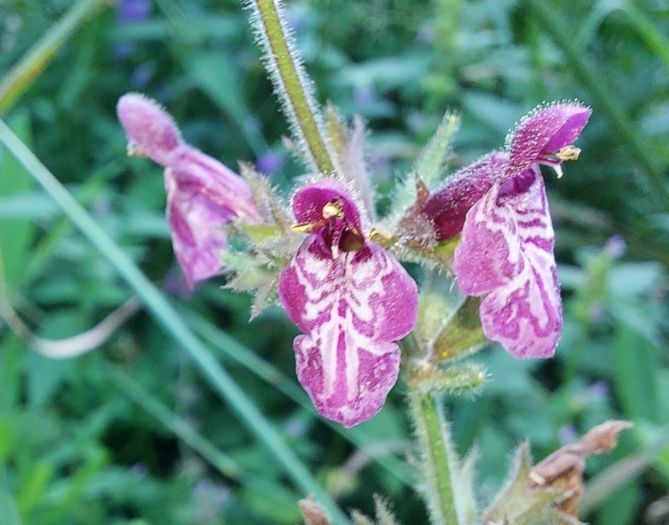Hedge Woundwort
(Stachys sylvatica)
Hedge Woundwort (Stachys sylvatica)
/
/

Pavel Borodin
CC BY 4.0
Image By:
Pavel Borodin
Recorded By:
Copyright:
CC BY 4.0
Copyright Notice:
Photo by: Pavel Borodin | License Type: CC BY 4.0 | License URL: http://creativecommons.org/licenses/by/4.0/ | Rights Holder: Pavel Borodin | Publisher: iNaturalist | Date Created: 2021-07-27T11:27:18-07:00 |






















Estimated Native Range
Summary
Stachys sylvatica, commonly known as hedge woundwort, is a perennial herbaceous plant native to a variety of habitats including deciduous woodlands, forest edges, hedgerows, and meadows across Europe and central and western Asia. It typically grows up to 31 inches tall and is characterized by its hairy stems and opposite pairs of mid-green, stalked leaves. The plant emits a fetid smell when crushed and features slender underground runners. Hedge woundwort blooms from June to September, producing small, reddish-purple flowers that are arranged in dense whorls at the top of the stems. While not particularly showy, the flowers are attractive to bees and other pollinators.
Hedge woundwort is valued for its medicinal properties, historically used to treat wounds and staunch bleeding. It is also appreciated for its ability to thrive in shaded conditions, making it suitable for woodland gardens, naturalized areas, and as a ground cover in part shade to full shade. It prefers moist, well-drained soils but can tolerate a range of soil types. Gardeners should be aware that it can spread aggressively via its runners and self-seeding, potentially becoming invasive outside its native range. It is advisable to manage its spread to prevent it from overtaking other plantings.CC BY-SA 4.0
Hedge woundwort is valued for its medicinal properties, historically used to treat wounds and staunch bleeding. It is also appreciated for its ability to thrive in shaded conditions, making it suitable for woodland gardens, naturalized areas, and as a ground cover in part shade to full shade. It prefers moist, well-drained soils but can tolerate a range of soil types. Gardeners should be aware that it can spread aggressively via its runners and self-seeding, potentially becoming invasive outside its native range. It is advisable to manage its spread to prevent it from overtaking other plantings.CC BY-SA 4.0
Plant Description
- Plant Type: Herb
- Height: 2-3 feet
- Width: 1-2 feet
- Growth Rate: Moderate
- Flower Color: Purple
- Flowering Season: Summer
- Leaf Retention: Deciduous
Growth Requirements
- Sun: Full Sun, Part Shade
- Water: Medium
- Drainage: Medium
Common Uses
Bee Garden, Bird Garden, Butterfly Garden, Low Maintenance
Natural Habitat
Native to deciduous woodlands, forest edges, hedgerows, and meadows across Europe and central and western Asia
Other Names
Common Names: Hedge Woundwort, Forest Woundwort, Hedge Nettle, Betony
Scientific Names: , Stachys sylvatica, Stachys canariensis, Stachys cordata, Stachys cordatifolia, Stachys foetida, Stachys foetida, Stachys glaucescens, Stachys glaucescens, Stachys sylvatica var. minus
GBIF Accepted Name: